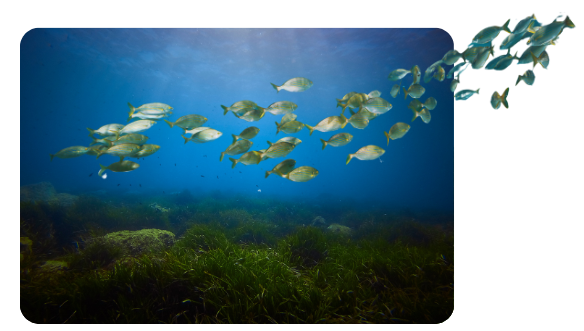Story
New approach to satellite data analysis reveals unexpected patterns in biological production
18 January 2023
The pioneering statistical method compensates more accurately for gaps in chlorophyll and sea surface temperature data.

Photo: Algal bloom / contains modified Copernicus Sentinel data (2019), processed by ESA, CC BY-SA 3.0 IGO Chl
A team of scientists at Plymouth Marine Laboratory (PML) have developed a new approach to analyse the variability in satellite data, designed to improve the understanding of variabilities in oceanic primary production (in which phytoplankton – microscopic marine algae – generate oxygen from atmospheric or dissolved carbon dioxide).
Marine ecosystems are defined not only by the general abundance of primary producers, but also by their variability. In many regions of the ocean, biological production is punctuated by hotspots and blooms that exhibit a high spatial and temporal variability in the phytoplankton biomass. A classic example of how periodic changes in primary production have profound effects on the food web and carbon cycle is the annual North Atlantic spring bloom.
Satellite-derived sea surface temperature (SST) and chlorophyll* (Chl) datasets are invaluable for estimating oceanic primary production, air-sea heat exchange, and the spatial and seasonal patterns that occur. However, due to factors such as cloud cover and the frequency of data capture, there are inevitable gaps in the datasets. Traditionally, this has been tackled by averaging the data to find the dominant timescale.
Using their new MOving Standard deviation Saturation (MOSS) approach – which enables the analysis of sparse time series (with as little as 10% of the data) – the team at PML have now identified that there can be a much higher variability in biological production than previously thought, particularly in certain areas of the ocean such as coastal areas and the tropics.
The MOSS method is based on the concept that a small section of a time series only includes variability on timescales smaller or equal to the size of that section, while variance on longer timescales is invisible.
By applying the MOSS method to sea surface temperature (SST) and chlorophyll (Chl) datasets, the team discovered unexpected global patterns of variability, with the shortest timescales found in subtropical gyres (areas of anticyclonic ocean circulation that sit beneath a region of subtropical high pressure) and upwelling regions (where currents bring deep, cold water to the surface of the ocean). The method also showed that SST generally has much longer timescales of variability than Chl.
Senior Scientist at PML Dr Bror Jonsson, who was the lead author of the study, said:
“The correlation between sea surface temperatures and chlorophyll biology is well-accepted and the assumption is that that physics and biology go hand-in-hand, but what we have found is that the biology reacts much more quickly than we previously thought. Traditional methods of analysis run the risk of missing changes that may occur during a very short timescale. With the MOSS method we are able to better understand the complexity of the processes occurring in marine systems and we hope this will enable us to achieve much better resolution for climate and regional modelling.”
The full publication “Dominant timescales of variability in global satellite chlorophyll and SST revealed with a MOving Standard deviation Saturation (MOSS) approach” can be accessed here.
